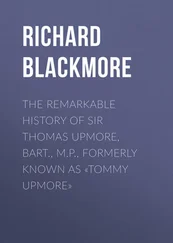Thomas Akins - History of Halifax City
Здесь есть возможность читать онлайн «Thomas Akins - History of Halifax City» — ознакомительный отрывок электронной книги совершенно бесплатно, а после прочтения отрывка купить полную версию. В некоторых случаях можно слушать аудио, скачать через торрент в формате fb2 и присутствует краткое содержание. Жанр: foreign_antique, foreign_prose, Историческая проза, на английском языке. Описание произведения, (предисловие) а так же отзывы посетителей доступны на портале библиотеки ЛибКат.
- Название:History of Halifax City
- Автор:
- Жанр:
- Год:неизвестен
- ISBN:нет данных
- Рейтинг книги:3 / 5. Голосов: 1
-
Избранное:Добавить в избранное
- Отзывы:
-
Ваша оценка:
- 60
- 1
- 2
- 3
- 4
- 5
History of Halifax City: краткое содержание, описание и аннотация
Предлагаем к чтению аннотацию, описание, краткое содержание или предисловие (зависит от того, что написал сам автор книги «History of Halifax City»). Если вы не нашли необходимую информацию о книге — напишите в комментариях, мы постараемся отыскать её.
History of Halifax City — читать онлайн ознакомительный отрывок
Ниже представлен текст книги, разбитый по страницам. Система сохранения места последней прочитанной страницы, позволяет с удобством читать онлайн бесплатно книгу «History of Halifax City», без необходимости каждый раз заново искать на чём Вы остановились. Поставьте закладку, и сможете в любой момент перейти на страницу, на которой закончили чтение.
Интервал:
Закладка:
On the 11th March, 1760, the following gentlemen were appointed Justices of the Peace for the county of Halifax, viz.: The Hon. Jonathan Belcher, Hon. Benjamin Green, Hon. John Collier, Hon. Charles Morris, Hon. Richard Bulkeley, Hon. Thomas Saul, Hon. Joseph Gerrish, William Nesbitt, John Duport, Joseph Scott, John Creighton, Sebastine Zouberbuhler, Edward Crawley, Charles Proctor and Benjamin Gerrish, and on 30th December following, Malachi Salter, Alexander Grant, Johnathan Binney and John Burbidge were added to the number. Messrs. Morris, Duport, Scott, Gerrish and Crawley were appointed Justices of the Inferior Court of Common Pleas.
Governor Lawrence, who had been for 7 days ill, died of inflammation of the lungs on the morning of the 19th October, 1760. The Council were immediately summoned, and Chief Justice Belcher sworn in to administer the Government. A question had arisen on a previous occasion, between Mr. Belcher and Mr. Green, as to the eligibility of the Chief Justice to the office of administrator of the Government, which was decided in favour of the Chief Justice, but some years after, the question was determined by the British Government declaring that the two offices of administrator of the Government and Chief Justice, should never be held by the same person.
It was resolved in Council, that the funeral of the late Governor should be at the public expense, and a monument to his memory was afterwards voted by the Assembly to be placed in St. Paul's Church. 37 37 The inscription to be placed on this monument is given at full length in the Gazette of that day, but it was not to be found among those which cover the walls of old St. Paul's. There is, however, an escutcheon with the arms of Lawrence on the east gallery.
The funeral of Governor Lawrence took place on the Thursday following, 24th October, at 4 p. m. The procession began from Government House as follows: —
The Troops in Garrison, the Military Officers, two field pieces 6 pounders, the Physicians, the ministers, the corpse in a coffin covered with black velvet, and the pall, to which were affixed escutcheons of His Excellency's arms, supported by the President and the rest of His Majesty's Council.
The Mourners, the Provost Marshall, the House of Assembly, the Magistrates, the Civil Officers, the Freemasons and a number of the inhabitants. The Bearers, Clergy, Physicians and all Officers, Civil and Military had linen and cambric hat-bands.
The corpse was preceded near the church by the orphans singing an anthem. The pulpit, reading desk and the Governor's pew, were covered with black and escutcheons, and a most pathetic Funeral Sermon was preached by the Reverend Mr. Breynton, Rector of the Parish, after which the corpse was interred on the right side of the Communion Table.
Minute guns were fired from one of the batteries, from the time the procession began, until the interment, when the whole was concluded with three volleys from the troops under arms.
The Supreme Court, which began on Tuesday following, was hung in mourning and escutcheons.
The following fulsome eulogium, to the late lamented Governor, appeared in the newspapers of the day: "The Lieutenant Governor was possessed of every natural endowment and acquired, accomplishment necessary to adorn the most exalted station, and every amiable quality that could promote the sweets of friendship and social intercourse of human life.
"As Governor, he exerted his uncommon abilities with unwearied application, and the most disinterested zeal in projecting and executing every useful design that might render this Province and its rising settlements flourishing and happy. He encouraged the industrious, rewarded the deserving, excited the indolent, protected the oppressed and relieved the needy. His affability and masterly address endeared him to all ranks of people, and a peculiar greatness of soul made him superior to vanity, envy, avarice or revenge.
"In him we have lost the guide and guardian of our interests, the reflection on the good he has done, the anticipation of great things still expected from such merits, and circumstances which, while they redound to his honour, aggravate the sense of our irreparable misfortune."
About the end of October, Commodore Lord Colville arrived in the harbor with the Northumberland and three other ships of the line and several frigates from Quebec. The Sloop-of-War England also arrived from England with dispatches and next day sailed for Louisburg and Quebec. Several transports also came in about the same time with Col. Montgomery's Highlanders to relieve the two battalions of the 60th Royal Americans.
Among the advertisements in the Halifax Gazette of 1st November, 1760, is the following:
"To be sold at public auction, on Monday the 3rd of November, at the house of Mr. John Rider, two Slaves, viz.: a boy and girl, about eleven years old; likewise, a puncheon of choice old cherry brandy, with sundry other articles."
1759. Among the town officers nominated by the Grand Jury this year were, John Fillis, Richd. Wenman, Richd. Gibbon and Wm. Schwartz as Commissioners of the poor for the town.
Surveyors of Highways, Chas. Morris, Esq., Chas. Proctor, Esq., Mr. Wm. Prescott and Mr. John Rider.
This year an Act of the Legislature was passed to regulate the Sambro Light House at the entrance of Halifax Harbor, which had been erected the previous year at the expense of £1000. The Work House was also erected this year. Firing guns within the town and peninsula was forbidden in 1758 under a penalty.
The accession of King George the Third was proclaimed at Halifax on the 11th February, 1761, with great ceremony. The proclamation was first read at the Court House door, 38 38 Now Northup's corner, Buckingham and Argyle Streets.
then at the north gate of the town, 39 39 At this period there was a fence on the north side of what is now called Jacob St. and a gate near the opening of Brunswick St., in front of the North Barrack old parade, some say further north.
at Government House, at the south gate, 40 40 The situation of the south gate is uncertain: there were several south gates. It was along Salter Street, probably in a line with the old forts known as Luttrell's and Horseman's Forts.
and lastly on the Parade, where the troops were drawn up and a salute fired by the artillery. Lord Colville's fleet being in the harbour at the time, "each ship fired a Royal Salute, beginning with his Lordship's flagship the Northumberland."
The order of the procession on this occasion was as follows: – 1st, A Company of Grenadiers; 2nd, Constables of the Town; 3rd, Magistrates; 4th, Civil Officers of Government; 5th, Constables; 6th, The Provost Marshall with two deputies on horseback; 7th, a Band of Music; 8th, Constables; 9th, The Commander-in-Chief of the Province, the Honorable Jonathan Belcher, with Admiral Lord Colville and Colonel Foster, commandant of the Garrison, and the members of His Majesty's Council; 10th, the Speaker and the members of the House of Assembly, followed by the principal inhabitants. At three o'clock the company waited on the Commander-in-Chief at Governor Lawrence's head tavern, where a very elegant entertainment was provided for them, and after dinner His Majesty's health was drunk under Royal Salute from the Batteries, also other toasts, and the evening concluded with great rejoicings and illuminations, bon-fires and artificial fire works, played off by the Royal Artillery. A sermon was afterwards ordered to be preached (13th February, 1761) in St. Paul's Church, on account of the decease of the late King, and all public amusements were ordered to cease for one month from that day. The 17th was accordingly set apart and the sermon preached by the Rev. T. Wood, the Curate. Part of St. Paul's church was hung in black, and minute guns were fired for an hour and a half, and the flags on the Citadel and George's Island were half-mast during the day.
Читать дальшеИнтервал:
Закладка:
Похожие книги на «History of Halifax City»
Представляем Вашему вниманию похожие книги на «History of Halifax City» списком для выбора. Мы отобрали схожую по названию и смыслу литературу в надежде предоставить читателям больше вариантов отыскать новые, интересные, ещё непрочитанные произведения.
Обсуждение, отзывы о книге «History of Halifax City» и просто собственные мнения читателей. Оставьте ваши комментарии, напишите, что Вы думаете о произведении, его смысле или главных героях. Укажите что конкретно понравилось, а что нет, и почему Вы так считаете.












